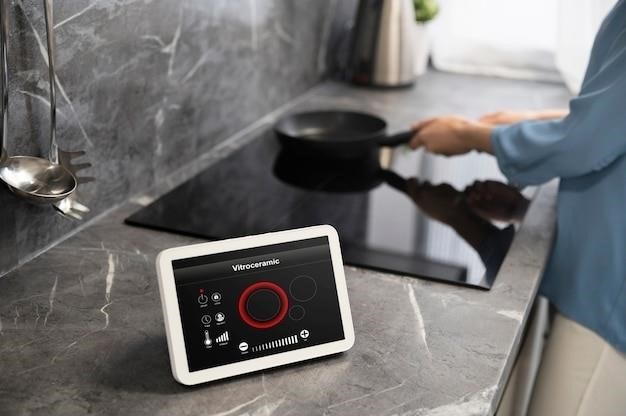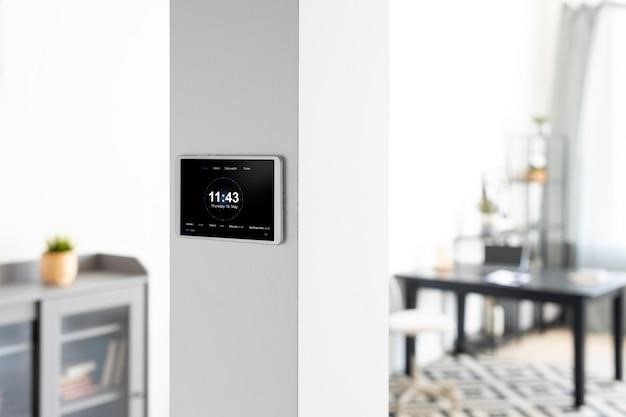Honeywell 7-Day Programmable Thermostat Manuals⁚ A Comprehensive Guide
This guide provides a comprehensive overview of Honeywell 7-day programmable thermostat manuals, covering various models like the RTH6580WF, RTH8560D, and RTH7560E. Find instructions for installation, setup, operation, and troubleshooting common issues. Access online manuals and PDFs for detailed assistance.
Finding the Right Manual
Locating the correct Honeywell 7-day programmable thermostat manual is crucial for successful installation and operation. Begin by identifying your specific thermostat model number. This information is usually found on a label on the thermostat itself, often on the front or back. The model number is essential because Honeywell produces a wide range of 7-day programmable thermostats, each with its own unique features and operating instructions. Once you’ve identified your model number, you can easily search online for the corresponding manual. Honeywell’s official website is an excellent resource, offering downloadable PDF versions of manuals for many of their thermostat models. Alternatively, you can search on major online retailers’ websites. Many retailers list product manuals as downloadable files alongside product descriptions. Remember to carefully check the model number matches before downloading to ensure you get the correct instructions.
Identifying Your Thermostat Model
Before you can download the correct Honeywell 7-day programmable thermostat manual, accurately identifying your specific model is paramount. This seemingly simple step is crucial, as Honeywell manufactures a diverse range of thermostats, each with its own unique features and operating instructions. A mismatch between your thermostat and the manual can lead to confusion and potentially incorrect operation. To find your model number, carefully examine your thermostat. The model number is typically printed on a label located on the front or back of the device. It might be a combination of letters and numbers, such as “RTH6580WF” or “RTH8500D.” Take note of all characters as even small discrepancies can lead to finding the wrong manual. If the label is difficult to read or missing, check your original purchase documentation or contact Honeywell customer support. They can assist in identifying your model based on details like the thermostat’s appearance or any identifying markings. Having the correct model number will ensure you access the accurate and helpful manual for your specific Honeywell thermostat.
Accessing Online Manuals
Locating your Honeywell 7-day programmable thermostat manual online is often simpler and more convenient than searching for a physical copy. Honeywell’s official website is an excellent starting point. Their support section usually features a comprehensive database of manuals for their products. You’ll typically need to enter your thermostat’s model number to locate the correct document. Many third-party websites also host Honeywell manuals, offering alternative access points. However, always prioritize official sources to ensure you are downloading an authentic and accurate manual. Be cautious when using unofficial sites, as they might offer outdated or incorrect versions. Once you’ve identified a reliable source, you can usually download the manual as a PDF file. This allows you to easily save it to your computer or mobile device for convenient access. Remember that online manuals are regularly updated, so checking the website periodically for newer versions is recommended. This ensures you have access to the latest information and any potential updates or corrections to the instructions.

Installation and Setup
This section details the installation process for your Honeywell 7-day programmable thermostat. Learn how to connect the thermostat to your HVAC system, set the time and day, and program your desired heating and cooling schedule.
Connecting the Thermostat
Before commencing, ensure you’ve safely switched off power to your HVAC system. Carefully remove your old thermostat, taking note of the wire connections. Consult your specific Honeywell thermostat manual for a wiring diagram tailored to your model; these diagrams usually depict the terminal connections clearly. Match the wires from your old thermostat to the corresponding terminals on your new Honeywell thermostat, ensuring a secure connection for each wire. Common wires are usually labeled “C,” while others may be labeled “R,” “G,” “W,” “Y,” and “O/B,” depending on your system’s configuration and features. Double-check all connections before restoring power to avoid potential issues. If you encounter any difficulties or uncertainties, referring to the detailed wiring instructions in your Honeywell manual is crucial. For further assistance, consider watching online installation videos that often visually demonstrate the process. Once all connections are firmly in place, mount the new thermostat securely to the wall plate, and carefully restore power to your HVAC system.
Setting the Time and Day
After successfully connecting your Honeywell thermostat, setting the correct time and day is crucial for accurate operation of its programmable features. Your Honeywell thermostat manual will guide you through this process, typically involving a series of button presses or touchscreen interactions. Locate the “Set Time” or equivalent function within the thermostat’s menu. Using the buttons (or touchscreen), input the current time, ensuring accurate hours and minutes. Next, set the correct day of the week; most Honeywell thermostats allow you to cycle through the days using dedicated buttons or a scrolling function. Confirm your entries to save the changes; this usually involves pressing a “Save,” “Enter,” or similar button. The thermostat’s display should then reflect the correctly set time and day. Some advanced Honeywell models may require you to set the date as well, usually in a month/day/year format. Always refer to your specific model’s manual, as the exact steps and button functions may vary slightly. Incorrectly setting the time and day can result in inaccurate temperature scheduling and potentially affect the overall efficiency of your HVAC system.
Programming the Thermostat Schedule
Programming your Honeywell thermostat involves creating a weekly schedule to automate temperature adjustments. Consult your specific model’s manual for detailed instructions, as the process varies slightly depending on the model. Generally, you’ll enter a “programming” or “schedule” mode, often accessible via a dedicated button or menu option. The interface will guide you to define periods (e.g., morning, afternoon, evening) and set desired temperatures for each. You can create separate schedules for weekdays and weekends, offering flexibility to accommodate different routines. For each period, input the start and end times, and specify the desired temperature for heating and cooling. Many Honeywell thermostats use a simple up/down button system for temperature adjustments. Once your schedule is complete, save it, and the thermostat will automatically switch between the programmed temperatures at the designated times. Remember to refer to the manual for detailed explanations of symbols, options, and any model-specific features. The manual also provides troubleshooting tips for any problems you might encounter during the programming process. Incorrectly set schedules may lead to energy waste or discomfort, emphasizing the importance of accurately following the instructions.

Operating Your Thermostat
This section details using your Honeywell thermostat’s display, understanding programming modes (manual, automatic, schedules), and resolving common operational issues. Refer to your specific model’s manual for detailed instructions and troubleshooting.
Understanding the Display
Your Honeywell thermostat’s display provides crucial information at a glance. The screen usually shows the current temperature, either in Fahrenheit or Celsius, depending on your setting. You’ll also see the current operating mode – heating, cooling, or fan only – clearly indicated. Many models display the scheduled temperature for the current period, allowing you to easily see if the thermostat is automatically adjusting based on your programmed schedule. Look for indicators showing if your program is active or if a temporary hold is in effect. Some advanced models might show additional data, such as the current humidity level or the status of your Wi-Fi connection if it’s a smart thermostat. Understanding these display elements is key to effective operation. Familiarize yourself with the symbols and abbreviations used, as they vary slightly depending on the specific Honeywell thermostat model. Consult your model’s manual for a complete legend if needed. The display will also guide you through programming and troubleshooting steps, providing clear prompts and error messages. Pay attention to any flashing lights or unusual symbols, as these may point to issues requiring attention.
Using the Programming Modes
Honeywell 7-day programmable thermostats offer flexible programming options to optimize energy efficiency and comfort. The most common mode is the 7-day programmable schedule, allowing you to set different temperatures for each day of the week, typically divided into periods (e.g., morning, daytime, evening, nighttime). Access this mode through the thermostat’s menu, usually by pressing a dedicated “Program” or “Schedule” button. You’ll then navigate through the days and periods, adjusting the setpoints (desired temperatures) for heating and cooling. Many models allow separate programming for weekdays and weekends. For immediate temperature adjustments without altering the schedule, use the “Hold” or “Temporary Hold” function. This temporarily overrides the programmed settings until the hold period expires or is manually canceled. Some thermostats offer “Permanent Hold” options, which disable the programmed schedule indefinitely until reactivated. Advanced models may include features like “Away” or “Vacation” modes, which automatically adjust temperatures while you’re away from home to conserve energy. Always refer to your specific thermostat’s manual for detailed instructions on accessing and utilizing the various programming modes and features. Understanding these options ensures you can easily customize your thermostat’s settings for optimal comfort and energy savings.
Troubleshooting Common Issues
Experiencing problems with your Honeywell 7-day programmable thermostat? Start by checking the power supply; ensure the thermostat is correctly wired and receiving power; A blinking or blank display often indicates a power issue. If the display shows error codes, consult your specific model’s manual for troubleshooting guidance; these codes provide clues to the problem. Common issues include incorrect temperature readings, system not turning on or off as programmed, or the thermostat failing to communicate with your heating/cooling system. Verify the thermostat’s settings; ensure the correct heating/cooling modes are selected and that the programmed schedule is active and correctly configured. Check for any loose wires or connections at the thermostat and at the HVAC system. If the problem persists, try resetting the thermostat to its factory defaults; this often resolves minor software glitches. If your thermostat is connected to Wi-Fi, ensure a stable internet connection is maintained. For advanced troubleshooting steps or if the issue continues despite these attempts, contact Honeywell customer support or a qualified HVAC technician. They can provide further assistance and potentially diagnose more complex problems that require professional attention.